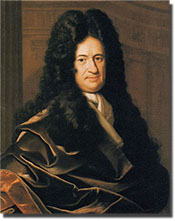Pragmatic Sanction (1713)
(April 19, 1713), decree promulgated by the Holy Roman emperor Karl VI. (1685-1740) with the intent that all his Habsburg kingdoms and lands descend as an integral whole without partition. It stipulated that his undivided heritage go to his eldest son, should he have one, or, failing a son, to his eldest daughter and then, if she should die without issue, to his deceased brother Joseph I.'s daughters and their descendants. A son was born to Charles in 1716 but died in the same year, and Charles's subsequent children were both daughters (Maria Theresa (1717-1780), born in 1717, and Maria Anna, born in 1718). Accordingly, in 1720, the Pragmatic Sanction was published, embodying Charles's decision of 1713. On its publication the decree received the assent of the individual estates of the Habsburg dominions, so that it came to be a constitutional law of the developing Habsburg monarchy and a bond between the lands belonging to the Holy Roman Empire (the Austrian and Bohemian lands) and the lands outside the empire (those under the crown of Hungary).
Austrian diplomacy in the last decades of Karl's reign was directed toward securing acceptance of the Pragmatic Sanction from all the European powers. Joseph I's daughters and their husbands (the electors of Saxony and Bavaria), the Diet of the Empire, Russia, Spain, Great Britain, France, Prussia, the Netherlands, Denmark, and Sardinia did in fact recognize the Pragmatic Sanction.
On the death of Karl VI. in October 1740, however, the Pragmatic Sanction was promptly contested by two of the powers that had guaranteed it: Charles Albert of Bavaria and Frederick the Great of Prussia. The resultant War of the Austrian Succession (1740-1749) cost the Habsburgs most of Silesia, part of the Duchy of Milan, and the duchies of Parma and Piacenza (Treaty of Aix-la-Chappelle, 1748). On the other hand, Maria Theresa was left in possession of the rest of the Habsburg inheritance, and her husband, Francis Stephen of Lorraine, was recognized as Holy Roman emperor, with the style of Francis I. (1708-1765).
Copyright © 1994-2002 Encyclopædia Britannica, Inc.
![]()
Sources
- Encylopedia Britannica 2002, Expanded Edition DVD
Web





